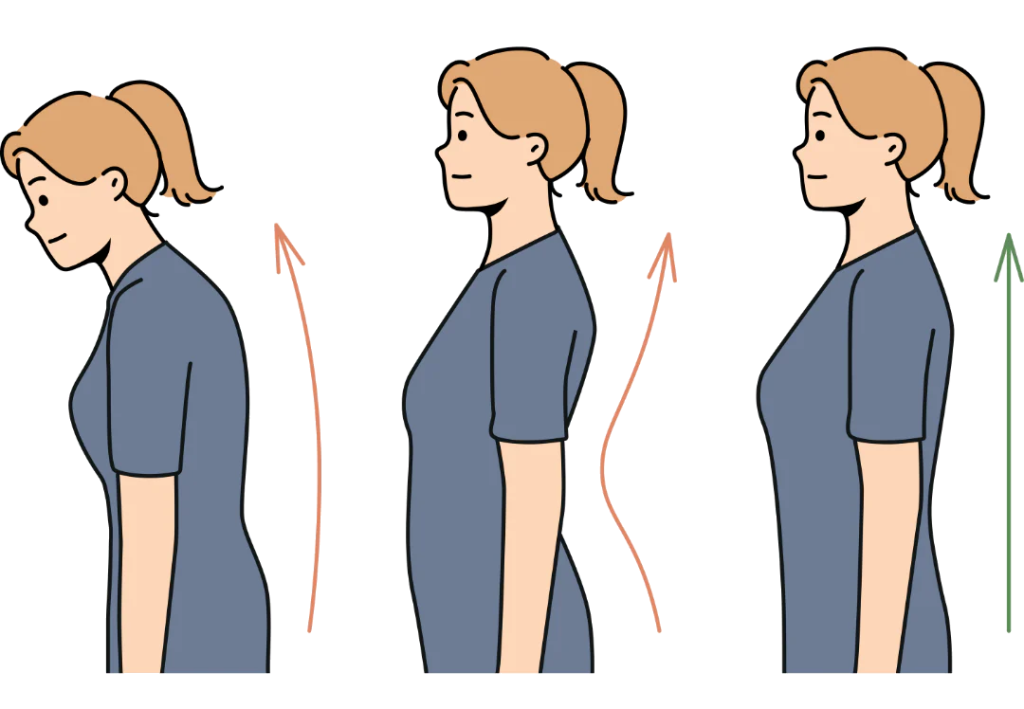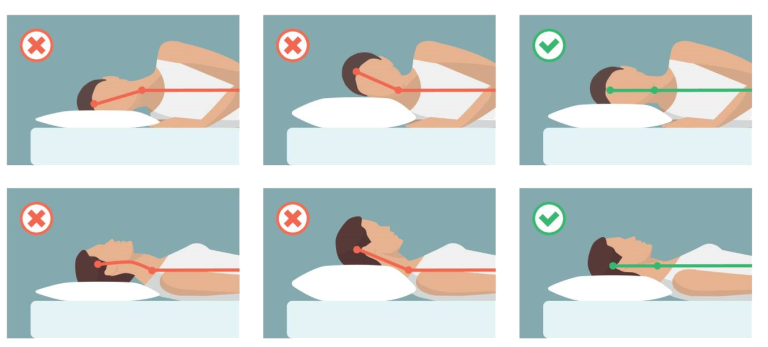After a whiplash injury, posture is something worth paying attention to. I’ll be honest, it wasn’t something I focused on much at first. But over time, I noticed how the way I sat, stood, and moved had a real impact on how my neck and upper back felt.
When your body’s healing, even small adjustments in posture can ease tension, reduce strain, and support recovery.
Table of Contents
ToggleWhat Is Good Posture?
Good posture isn’t about sitting stiffly or standing like a soldier. It’s about aligning your body in a way that supports your spine’s natural curves, especially in the neck and lower back.
That means:
- Your head stacked over your shoulders (not jutting forward)
- Shoulders relaxed and down
- A gentle inward curve in your lower back
- Chin slightly tucked, not reaching forward
- Feet flat on the floor, with knees at hip height

Helpful Cues That Made a Difference
A few simple mental images helped me retrain my posture in a more natural way:
- String from your head: Imagine a string attached to the top of your head, lifting you gently upward. It helps you lengthen your spine without forcing it.
- Elastic band from chin to shoulder: When turning your head, picture a soft elastic band stretching from your chin to your shoulder. It reminds you to move with control and avoid sudden, sharp movements.
- Relax your shoulders: Try and relax your shoulders every hour. You often don’t realize that your shoulder hold a lot of tension.
Practical Changes
1. Sleeping Setup
I switched to a flatter pillow that keeps my neck in a more natural position. Not pushed forward or flexed.
Some nights, when my neck feels really stiff, I roll up a towel and place it under my neck for about 15 minutes. It helps support the natural curve of my neck and gently relieves pressure and tension.

2. Desk Setup
- Raised my laptop screen to eye level
- Used a separate keyboard and mouse
- Sat with feet flat, back supported, and knees at 90 degrees
3. Movement and Exercise
- Took breaks every 30–60 minutes to move around
- Gently stretched tight areas (chest, shoulders)
- Exercises focused on my core and upper back
- Practiced breathing into my belly instead of shallow chest breathing
What You Can Do Today
Start simple:
- Imagine the string lifting your head
- Tuck your chin slightly, don’t let it drift forward
- Use the elastic band cue when turning your head
- Try a flatter pillow, or place a rolled towel under your neck
- Get up and move regularly
- Do light, neck-safe stretches and strength exercises
- Breathe deeply into your belly and relax the shoulders
Check out this short demonstration video: “Posture & Neck Alignment Guide”. Posture & Neck Alignment Guide
